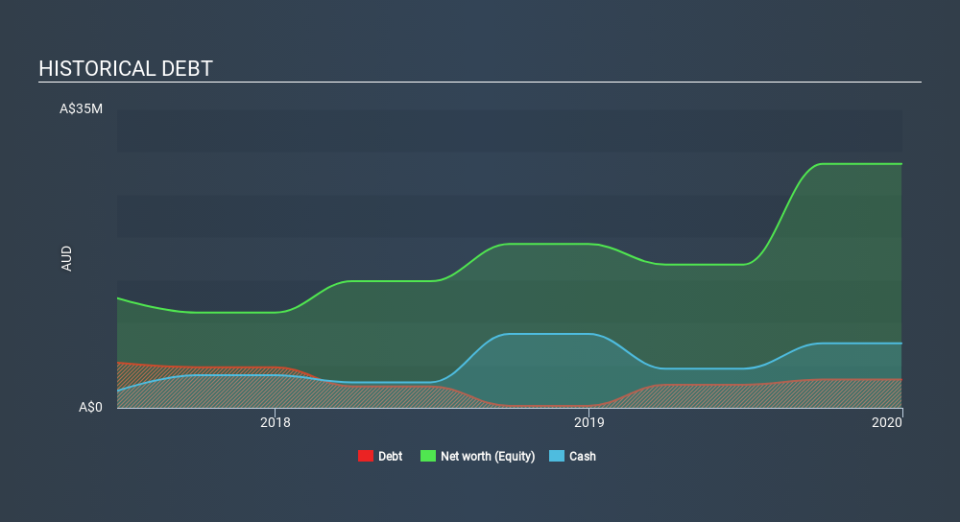Is Calix (ASX:CXL) A Risky Investment?

Legendary fund manager Li Lu (who Charlie Munger backed) once said, 'The biggest investment risk is not the volatility of prices, but whether you will suffer a permanent loss of capital. So it might be obvious that you need to consider debt, when you think about how risky any given stock is, because too much debt can sink a company. Importantly, Calix Limited (ASX:CXL) does carry debt. But should shareholders be worried about its use of debt?
When Is Debt A Problem?
Debt and other liabilities become risky for a business when it cannot easily fulfill those obligations, either with free cash flow or by raising capital at an attractive price. Part and parcel of capitalism is the process of 'creative destruction' where failed businesses are mercilessly liquidated by their bankers. However, a more frequent (but still costly) occurrence is where a company must issue shares at bargain-basement prices, permanently diluting shareholders, just to shore up its balance sheet. Of course, plenty of companies use debt to fund growth, without any negative consequences. The first step when considering a company's debt levels is to consider its cash and debt together.
See our latest analysis for Calix
How Much Debt Does Calix Carry?
You can click the graphic below for the historical numbers, but it shows that as of December 2019 Calix had AU$3.31m of debt, an increase on AU$236.7k, over one year. But it also has AU$7.56m in cash to offset that, meaning it has AU$4.26m net cash.
How Healthy Is Calix's Balance Sheet?
The latest balance sheet data shows that Calix had liabilities of AU$7.91m due within a year, and liabilities of AU$1.26m falling due after that. Offsetting this, it had AU$7.56m in cash and AU$5.43m in receivables that were due within 12 months. So it actually has AU$3.82m more liquid assets than total liabilities.
This surplus suggests that Calix has a conservative balance sheet, and could probably eliminate its debt without much difficulty. Succinctly put, Calix boasts net cash, so it's fair to say it does not have a heavy debt load! The balance sheet is clearly the area to focus on when you are analysing debt. But it is future earnings, more than anything, that will determine Calix's ability to maintain a healthy balance sheet going forward. So if you're focused on the future you can check out this free report showing analyst profit forecasts.
Over 12 months, Calix reported revenue of AU$5.5m, which is a gain of 41%, although it did not report any earnings before interest and tax. With any luck the company will be able to grow its way to profitability.
So How Risky Is Calix?
By their very nature companies that are losing money are more risky than those with a long history of profitability. And the fact is that over the last twelve months Calix lost money at the earnings before interest and tax (EBIT) line. Indeed, in that time it burnt through AU$9.0m of cash and made a loss of AU$6.4m. With only AU$4.26m on the balance sheet, it would appear that its going to need to raise capital again soon. With very solid revenue growth in the last year, Calix may be on a path to profitability. By investing before those profits, shareholders take on more risk in the hope of bigger rewards. There's no doubt that we learn most about debt from the balance sheet. However, not all investment risk resides within the balance sheet - far from it. Take risks, for example - Calix has 4 warning signs we think you should be aware of.
Of course, if you're the type of investor who prefers buying stocks without the burden of debt, then don't hesitate to discover our exclusive list of net cash growth stocks, today.
If you spot an error that warrants correction, please contact the editor at editorial-team@simplywallst.com. This article by Simply Wall St is general in nature. It does not constitute a recommendation to buy or sell any stock, and does not take account of your objectives, or your financial situation. Simply Wall St has no position in the stocks mentioned.
We aim to bring you long-term focused research analysis driven by fundamental data. Note that our analysis may not factor in the latest price-sensitive company announcements or qualitative material. Thank you for reading.

 Yahoo Finance
Yahoo Finance 
